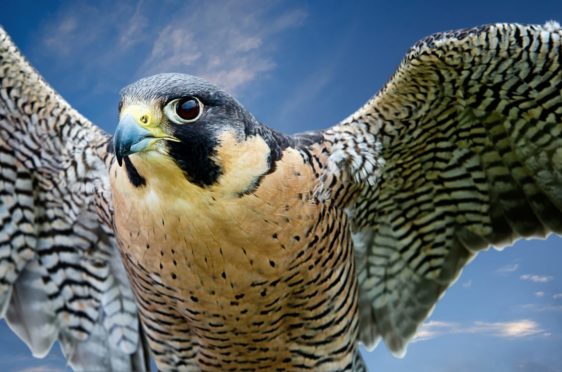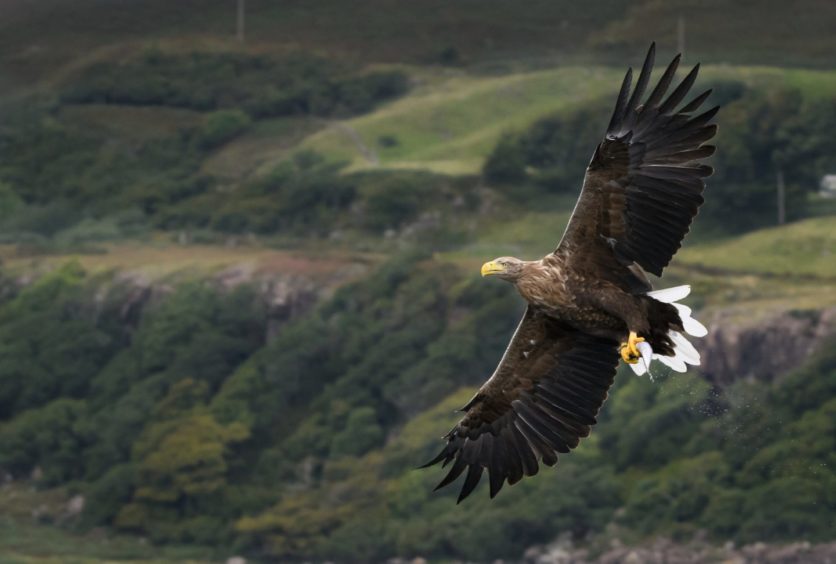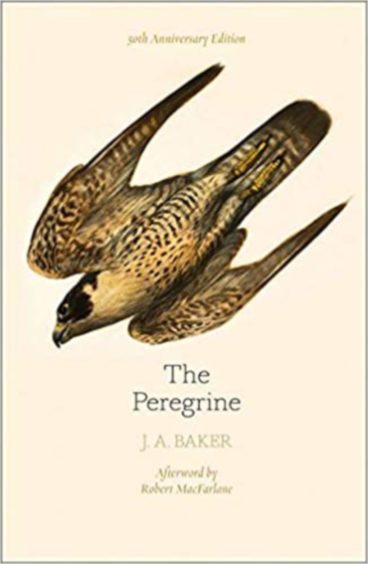
Before I resume the saga of the peregrine, the kestrel and the sea eagle, I should introduce you to Mr JA Baker, or rather to his book, The Peregrine, which was published in 1967.
It is widely regarded as a classic of nature writing, but there are also sceptics who think that at best it is exaggerated, and at worst express outright disbelief. For years, I have sailed with the sceptics.
Here, for example, is a typical passage: “There is a curious relationship between peregrines and kestrels that is difficult to define. The two species are often seen in the same place…the peregrine may occasionally rob the kestrel of its prey, the kestrel may feed on kills the peregrine has left, the peregrine may attack birds the kestrel unwittingly puts up for him…
“Some peregrines seem to copy the kestrels’ way of hunting, and I have seen a peregrine hunting near a short-eared owl, and apparently mimicking its style of flight. By March the relationship between kestrel and peregrine has changed; the peregrine has become hostile, and will stoop at, and probably kill, any kestrel hovering near him.”
The Great Outdoors: As kestrel and peregrine eye territory, a new threat casts a dark shadow
Mr Baker’s terrain was Essex, where he appeared to see an astonishing number of peregrines as well as astonishing behaviour. But in my own backyard and over decades of watching these peregrine crags at every season, with their frequent kestrels, buzzards and sparrowhawks, all of which encroach on each other’s nesting territories, I recognised none of the behaviour that Mr Baker suggested was routine.
Yes, peregrines and kestrels notice each other and get twitchy around their nesting territories. But, as far as I know, hostility has always been confined to nothing worse than pointed gestures.
But mimicking the flight of another species? Why would a peregrine, superstar flier of its own airspace, mimic a kestrel or an owl? It heaped fuel on the fire of my doubts about Mr Baker’s book. And, as he died in 1986, I can’t ask him about it now.
So, as I was saying at the end of last week’s article, the male peregrine sounded an alarm, a second bird came into view high above it and revealed itself as a sea eagle, then it descended towards the peregrine, towards me, and I thought: “This should be good.”
The hills where I saw the peregrine were essentially Lowland. The River Forth unspools through flat fields to the south as it heads for the Firth. If you think of a sea eagle as a bird of the Hebridean west with all of that land-and-seascape’s grand gestures – the illimitable ocean and sky, the endless islands, the surf-washed Cuillin – the sight of such a bird transported into this comparatively domestic setting can be stupefying. It just looks plain wrong, like a whale in a pond.
The eagle descended slowly above the peregrine, which in turn descended slowly above the gully west of his eyrie crag, keeping a healthy 100ft of altitude between them, presumably confident of outsprinting the eagle if it came to that. I acknowledge an uncharitable moment when I hoped it might come to that, if only to see what it looked like.
But when the peregrine drifted into the open throat of the gully and paused to execute two sun-wise circles, awaiting developments, the sea eagle did not follow it down. Instead, it banked left, flourishing wings the size of rain clouds, and flew away east along the front of the hills just above the top of the crags and heading straight for the peregrine’s eyrie niche.
The peregrine’s response was extraordinary. I had expected it to mob the eagle at the very least. Instead, it simply followed about 50 yards behind and 50 feet lower, behaving like a stalker, and both birds flew slowly – slowly, that is, considering they were an eagle and a falcon. The sea eagle’s oversized wingspan flapped loosely, glided a few yards with wings held in a shape rather like a wave, flapped again, glided…the whole technique looking as if the bird was making heavy weather of the simplest of level flights.
And then there was the most remarkable moment: the peregrine started to mimic the flight pattern of the eagle, right down to those loose-limbed downstrokes and, although it clearly attempted the wavy-wing glides too, that was not quite so convincing. And of course, at that moment, Baker’s book came into my mind, for here was certainly what looked like the deliberate mimicry of a sea eagle.
But to what end? What on earth is the point? Is it play? Is it flattery, an attempt at ingratiation? Is it deliberate and calculating or merely instinctive?
Baker said “some peregrines seem to copy…” as though he thought perhaps it was not a universal trait in the species. It occurred to me too, that if it had been a golden eagle rather than a sea eagle, it would have flown along the top of the crag in a stiff-winged glide without a wingbeat, a feat it can reproduce at almost zero knots, and I suspect that particular trick may not be in the peregrine’s repertoire.
But is that the point then? Is it a purposeful exploration of one more of the possibilities of flight beyond the peregrine’s renowned capacity for flat-out speed? Perhaps guile is the end product in order to fool a predator or a prey species for that matter, the way a skylark or a dotterel feigns a broken wing? I am convinced by none of my own theories.
I watched both birds until they vanished beyond the end of the crag. I wondered how far falcon would shadow eagle. I guessed it was well beyond the margins of the home territory, for he was gone for an hour. I imagined him sitting upright on a conspicuous tree staring east where the eagle vanished beyond even the phenomenal eyesight of a peregrine falcon.
But the day had not finished. I found the peregrine again after its hour-long absence when it broke the skyline and dropped to a high, wide-open, level, grassy terrace, and perched there.
As it did so, another bird I had simply not seen broke cover, flew the length of the terrace at almost ground level and directly at the peregrine, which took off. This new bird flashed its own emblematic tribal badge almost as conspicuous as the sea eagle’s tail, a white blaze at the base of a long, straight tail. It was a female hen harrier. This just wasn’t the peregrine’s day, but it made mine.
The peregrine vanished behind me but the harrier wheeled and retraced its journey along the terrace, landed, fussed in the grass for a few seconds, then rose a yard above the ground, wheeled once more and traversed the terrace for the third time. Now her attitude was quite different. She travelled at the speed of a carthorse after a long day in the shafts, her sleek profile troubled by a hefty morsel of prey that hung bunched up, dark and bloodied in her talons.
My best guess: wittingly or otherwise, the peregrine disturbed the harrier in the grass where it had been feeding just beyond my line of sight. The harrier challenged the peregrine with the direct flight. The peregrine deferred and did not attempt to steal the unguarded prey. So, once again, I was questioning Mr Baker and his book.
Ah, but then, as the harrier hefted its prey slowly along the terrace, the peregrine fell in behind her, not to attack the harrier – but to mimic her style of flight! Again the peregrine followed from about 50 yards behind, showing no aggression but just possibly escorting her off the premises. A few minutes later he returned and settled on a rock where I have seen him settle time without number. If he had answers to the questions that filled my head, he wasn’t saying.
I had a lot to think about as I wandered back along by the band of big firs that fringe the bottom of the crag. Perhaps if I come back often enough – and I will – there may be answers of a kind. Memo to self: time to re-read and reappraise The Peregrine by JA Baker.
Into the Wild: jimcrumleynature.com

Enjoy the convenience of having The Sunday Post delivered as a digital ePaper straight to your smartphone, tablet or computer.
Subscribe for only £5.49 a month and enjoy all the benefits of the printed paper as a digital replica.
Subscribe © Shutterstock / Speyside snaps
© Shutterstock / Speyside snaps
